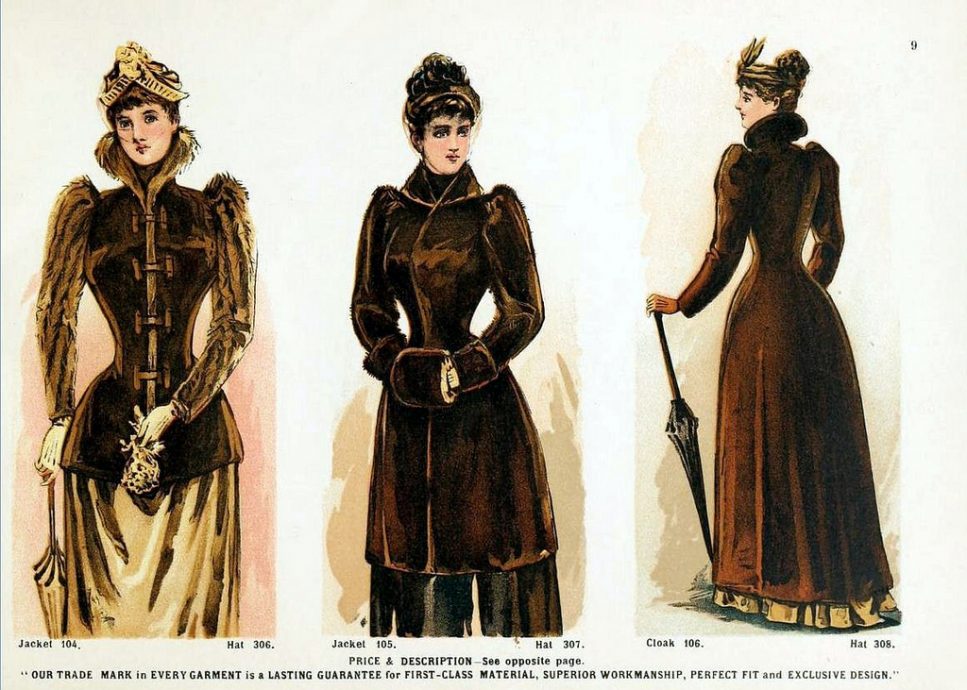Politics is its own sort of endeavor in free societies, quite distinct from either utility maximization or truth-seeking.
The Progress of Vanity
Teaching philosophy isn’t usually thought to go with an interest in fashion. For one thing, philosophers are hardly legendary for their sartorial flair. For another, someone might question why the philosopher would consider fashion an important subject to think or write about.
Fashion and the ethics of the fashion industry do preoccupy me, though. I have my reasons, not least of which is the thought of the German phenomenologist, Max Scheler (1874-1928). Scheler speaks of the “natural outlook,” by which phrase he tries to capture the idea that some phenomena are so close to us, so everyday, that we lose sight of their peculiar or contingent standing. We don’t register that the world could be ordered differently.
There are many indicators that fashion is one such. It is not rare to meet people who claim to be deeply committed to justice wearing very cheap clothing. Can such earnest people really be oblivious to the fact that it is the cheapest clothing that is made overseas under the worst manufacturing conditions? Can these “severe moralists,” to use David Hume’s phase, really have never asked: What is the justice of my clothing? If fashion is an example of Scheler’s natural outlook, then likely such people have not pondered the question. The need to ask it has simply passed them by.
Not so people in fashion: despite their many and severe moral shortfalls, many designers and marketers in the industry are alert to questions of justice.
Fashion is all around us yet is barely understood. Our colleges and universities largely ignore it. Almost no philosophical, theological, or ethical works on the subject exist. Even less understandably, it’s barely a blip on the screen in our business schools.
This last ought to astonish us. We all know the phrase, “Money makes the world go around,” but in fact Adam Smith and David Hume thought it was fashion, not money. They believed that the driver of commerce was the human propensity to adorn ourselves with the decorative arts. These two Scots were advocates of vanity—they believed it both got us out of poverty and built good politics.
In today’s world of politics, we know that designers are not shy about making ideological statements, and some thrill to the thought that their manipulation of fabric packs a disrupting political punch: punk, the Scottish nationalism of Alexander McQueen, Katy Perry’s Obama “Forward” dress, and, in light of Europe’s migrant crisis, the contemporary collection by Sarah Burton inspired by the Huguenot refugees. A goodly number of us might laugh at the pretension. But since it is undeniably true that we articulate our bodies, sense of self, and civilizational aspirations through fabric and materials, fashion and design must needs be examined.
Taking up the idea of vanity in a radically new way, Smith’s ethics rely on the role of the spectator. He was the first to emphasize that moral judgment is a matter of sympathy. In English, we associate this word “sympathy” with, say, what we feel when attending a funeral. Smith uses the term broadly to mean the remarkable capacity we have to share another’s emotion. Such sharing is the root of moral judgment.
A sort of spectator, a moral spectator, inhabits all of us, Smith thinks. We are continually judging others and, in turn, are highly aware that others observe and judge us. The spectator within us calibrates the positive and negative reactions to all exhibitions of emotion. If sympathy is engaged, we not only have a comparable sentiment to the person we are interacting with but therewith judgement is made that the feeling is morally appropriate.
Smith’s theory of moral judgement relies upon you and I being emotionally visible to one another, and what fosters and enhances that visibility is our adornments. Vanity—being seen and wanting to be seen—roots the moral order.
Smith’s ethics is really an aesthetics. He gives a troubling example: A palace is a more pleasing object to the spectator than a prison. This is obvious enough but Smith darkens the observation. Though unappealing, a prison performs a crucial social function in isolating those who damage social peace. A palace is oftentimes a site of arrogance, self-absorption, and political indifference. All the same, the luxury of the palace fascinates: the clothes, jewelry, cars, and decorative furnishings all grip the imagination. So gripped by the adornments are we, says Smith, that our inner spectator gets short-circuited—it seldom enables us to look beyond the glamour to ponder whether the surface conceals a deeper malformation of sensibility.
It’s akin to what we mean by describing as “star-struck” the gushing, autograph-seeking movie or sports fan. Or think of the bus tours of Graceland or Hollywood, where ordinary people pay money to get a glimpse of modern-day palaces. The culture’s preoccupation with celebrity is proof that Adam Smith is really on to something.
But while Smith expresses reservations about the spell that fashionable people cast, Hume relishes it all. If it were not for the history books, claims Hume, we would all discount Sparta as a fiction, it being so out of the ordinary run of things. Hume acknowledges both that the human being is a variable creature and that extraordinary circumstances can congeal to make possible strange phenomena. Sparta, so famously dismissive of luxury, and turning its face against the development of the arts and sciences, was an unnatural prodigy by his lights. Though the Spartans endured for 500 years, the better policy for government is to give free rein to a people’s permanent fascination with the ornamental life. The pursuit of ornament makes a people dynamic as they seek to attain beautiful objects through innovation. Innovations draw people into sociability, and cities develop where the populace plays a never-ending game of show-and-tell.
The result, thinks Hume, will be social peace. Attracted to one another’s finery in dress, deportment, manners, and furnishings, people will admire one another amidst an aesthetic calm of contemplation and entertainment. Civil harmony prevailing, a fashionable nation can also prevail against enemies. The innovations of the people’s commerce can be converted promptly to military use and the fact that people are used to being assessed by those around them makes honor and gallantry marks of the citizenry.
This is the great Whig vision of politics. And implicit in the writings of these great Scottish Whigs is an intriguing theory of justice. Since Plato’s Republic, Western philosophy has probed the idea of justice, but a decent working definition broadly accepted is that whatever tends to foster human development is also just.
Where is equality, one of our favored concepts, in all of this? In fact Hume and Smith believe that moving people out of poverty, refining them by the honing of the mechanical and the liberal arts, and crafting a politics that curbs power and enhances liberty, depend on inequality. In his Theory of Moral Sentiments (1759) Smith pens what is likely the very first treatise on the logic of fashion: he argues that fashions change when regular folk start wearing styles, fabrics, and accessories, comparable to those of the elites. But because luxury trades on being distinctive, the elites switch up what they are wearing and sponsor new developments in materials and craft. It is love of distinction, and its corollary, privilege, that is the goad to the refinement of the arts and sciences.
Hume, for his part, was a feisty philosopher, and at one point he relays a scrap he is in with a “severe moralist” who claims that drinking champagne is a crime when a pot of beer would suffice. He doesn’t detail more of the argument but he doesn’t need to; it is a familiar one. In an age of environmental awareness—and it is worth remembering that conservatives like Scheler, and also J.R.R. Tolkien, were amongst the very first to worry about industrial-scale damage to nature—we frequently hear that luxury consumption is a vice.
And yet: Why do we drink champagne? To celebrate births, significant accomplishments, the New Year, but most especially, marriage. The canonical wedding celebration remains an aping of the aristocracy. It is meticulously planned as a drama reenacting the life of privilege; it puts in place, if but for a day, a value hierarchy. Weddings are a moment when the logic of vanity, fashion, and commerce is laid bare: if I am to see others and be seen in turn, there must be an inequality in adornments. Otherwise, why bother looking at anyone at all?
It is not for nothing that, as China began its Cultural Revolution in 1964, the “Mao jacket” became de rigueur. To crush privilege, it was necessary to banish the bright, beautiful silks, and the velvet caps and rattan hats topped with pearl-encrusted finials of traditional Chinese attire, along with the shirts and ties that betrayed Western influence. It was necessary to slay vanity and have all indistinguishable from one another. Nor is it surprising that China is now the great absorber of Western fashion and luxury.
It is surely true that certain inequalities can be pernicious to good order. But when Smith and Hume identify morals and politics with the inequality implicit in vanity and fashion, they identify something essential to human development and justice.



